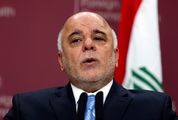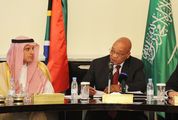WILL the present emerging markets rout be 1997 and 1998 all over again?
That is the question asked against the background of the strong recent sell-off in emerging market currencies and markets with the announcement by the US Federal Reserve Bank of the eventual demise of quantitative easing (QE) next year.
In some developed countries, it has become fashionable to predict another crisis similar to then, when especially East Asian countries suffered huge outflows of money and lower economic growth.
But conditions seem much different today. Firstly, East Asian countries were then in a notable spendthrift mode, building up little reserves in the process. But that lesson has been learnt well, with Thailand, Indonesia, Malaysia and especially China today having far greater reserve levels.
Secondly, and more notable, debt levels are much lower in these countries and in other emerging countries in general. Researchers at Capital Economics say these countries appear to have learnt lessons from previous crises. Earlier Fed tightening cycles created problems with high external debt, such as in 1981 in Latin America and Mexico in 1994, which led to a run on the peso, exacerbated by political instability. "But this time emerging markets have much stronger balance sheets."
The Fed seemingly was also astounded by the market’s reaction to divest from emerging markets, citing that the developed markets have overreacted. By saying this, the implication is that the tightening of QE does not mean imminent rate rises in developed countries, nor does it imply negativity toward emerging markets.
Emerging markets have reason to be aggrieved by the Fed’s three stimulatory actions since 2008.
They were swamped with liquidity, pushing down bond yields and boosting equity markets in a purely artificial way. This money has largely been divested again, leading to falling share prices.
But the fallout has been less in equity markets than with bonds. Selling bonds lead to higher yields and lower prices and a huge new burden for developing countries in that interest payments, as well as capital amounts, increase. Governments must therefore become more austere with fiscal policies at a time that budget deficits are already higher than before 2008.
Some countries, notably Brazil, have been fairly aggressive in criticising the Fed for QE measures. But criticism has largely fallen on deaf ears, with Fed chairman Ben Bernanke clearly indicating that US interests come first.
Developed economies should rather ask themselves where the dollars are going that are retracted from emerging markets?
It is clearly not going into American treasuries, as the 10-year Treasury Bill at above 2.5% is now the highest in nearly two years.
And equity markets, notably the Dow and S&P500, have been falling in sync with the emerging market sell-off.
Eurozone countries and the UK have also clearly not benefited, with growth low and austerity measures still shadowing many countries. And the strengthening of the yen has indicated scepticism about stimulatory measures there.
It now appears that most of the retracted money has been parked in money market funds, mainly in the US. Despite low yields in these markets investors have taken a wait-and-see attitude as the search for yield will not end with the demise of QE.
In this regard China is crucial. Growth has been lower, but is expected to still be above 7% higher this year, way above rates in the US and eurozone.
Divesting from low-yielding money markets to high-flying Chinese investments, or other higher growing emerging markets, could soon be a more logical option.
The rand could also be an eventual beneficiary. Signs that the rand is not a one-way emerging market currency was again evident this week. On Monday, the rand was remarkably strong while other emerging market currencies tumbled. And its performance on Wednesday was also stronger to just above R10.05 against the dollar.
The global markets research team at Rand Merchant Bank says it is possible that the rand will eventually play catch-up and show further weakness. But it remains noteworthy that it hit the low of R10,36 against the dollar only once on May 31, and has been strengthening at times to R9.90/$ since then.
This is happening while the Indian rupee and Turkish lira are hitting new lows continuously.
Rumours about a big new local deal, supporting the rand, has been in the offing.
There are indications that trading in emerging market currencies could lead to short-term weakness, but it is clearly not the one-way street it was in 1997 and 1998.



















Change: -0.47%
Change: -0.57%
Change: -1.76%
Change: -0.34%
Change: 0.02%
Data supplied by Profile Data
Change: -1.49%
Change: 0.09%
Change: -0.47%
Change: 0.00%
Change: -0.02%
Data supplied by Profile Data
Change: 0.48%
Change: 0.90%
Change: 0.36%
Change: -0.15%
Change: 1.05%
Data supplied by Profile Data
Change: 0.23%
Change: -0.32%
Change: 0.26%
Change: -1.05%
Change: -1.41%
Data supplied by Profile Data